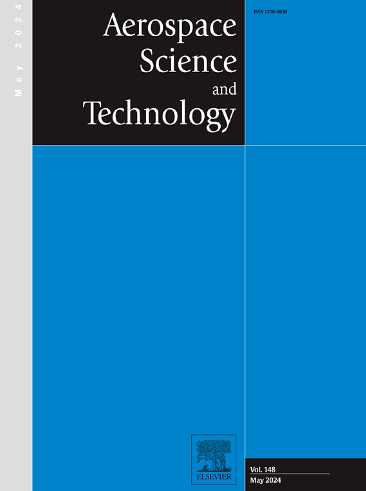Research on error compensation methods of wing deflection reconstruction based on FBG strain sensors
IF 5
1区 工程技术
Q1 ENGINEERING, AEROSPACE
引用次数: 0
Abstract
Fiber Bragg Grating (FBG) sensors have the characteristics of compact size, multiplexing capability, and high sensitivity, making them ideal for structural health monitoring of unmanned aerial vehicles (UAVs). However, FBG strain Sensors measure wing strain rather than wing deflection, necessitating the conversion of strain into deflection through a deflection reconstruction algorithm. The deflection reconstruction process is influenced by the number and placement of sensors, as well as the reconstruction algorithm, which may result in measurement errors.
To reduce reconstruction errors in wing deflection, this study proposes two approaches: the optimization of sensor placement and the application of an error compensation function.
Firstly, a method for optimizing the location and number of FBG sensors based on a genetic algorithm is proposed. By optimizing the sensor installation location and number to be more consistent with the actual strain distribution characteristics of the wing, the error of wing deflection measurement based on deflection reconstruction algorithm is reduced.
Additionally, a novel error compensation function based on Fourier Series Fitting is developed. Static loading test validated that this approach achieves high accuracy and robustness under varying load conditions, making it suitable for improving the precision of wing deflection reconstruction.
Finally, the wing deflection reconstruction system was implemented on a vertical take-off and landing (VTOL) UAV with a wingspan of 4 meters, achieving real-time measurement of wing deflection and twist angle during flight, verifying the effectiveness of both the reconstruction system and the error compensation function through flight testing.
求助全文
约1分钟内获得全文
求助全文
来源期刊

Aerospace Science and Technology
工程技术-工程:宇航
CiteScore
10.30
自引率
28.60%
发文量
654
审稿时长
54 days
期刊介绍:
Aerospace Science and Technology publishes articles of outstanding scientific quality. Each article is reviewed by two referees. The journal welcomes papers from a wide range of countries. This journal publishes original papers, review articles and short communications related to all fields of aerospace research, fundamental and applied, potential applications of which are clearly related to:
• The design and the manufacture of aircraft, helicopters, missiles, launchers and satellites
• The control of their environment
• The study of various systems they are involved in, as supports or as targets.
Authors are invited to submit papers on new advances in the following topics to aerospace applications:
• Fluid dynamics
• Energetics and propulsion
• Materials and structures
• Flight mechanics
• Navigation, guidance and control
• Acoustics
• Optics
• Electromagnetism and radar
• Signal and image processing
• Information processing
• Data fusion
• Decision aid
• Human behaviour
• Robotics and intelligent systems
• Complex system engineering.
Etc.
 求助内容:
求助内容: 应助结果提醒方式:
应助结果提醒方式:


